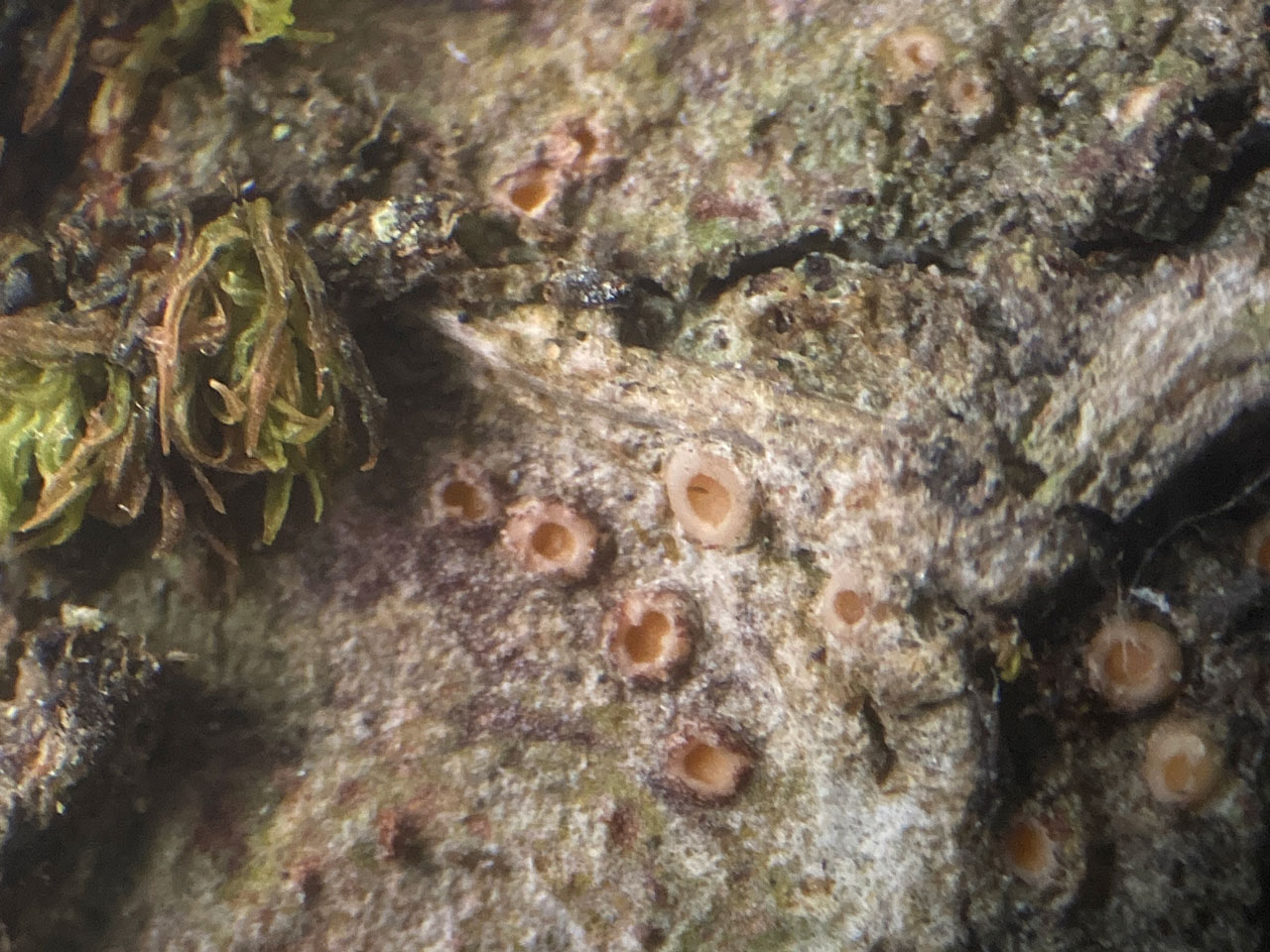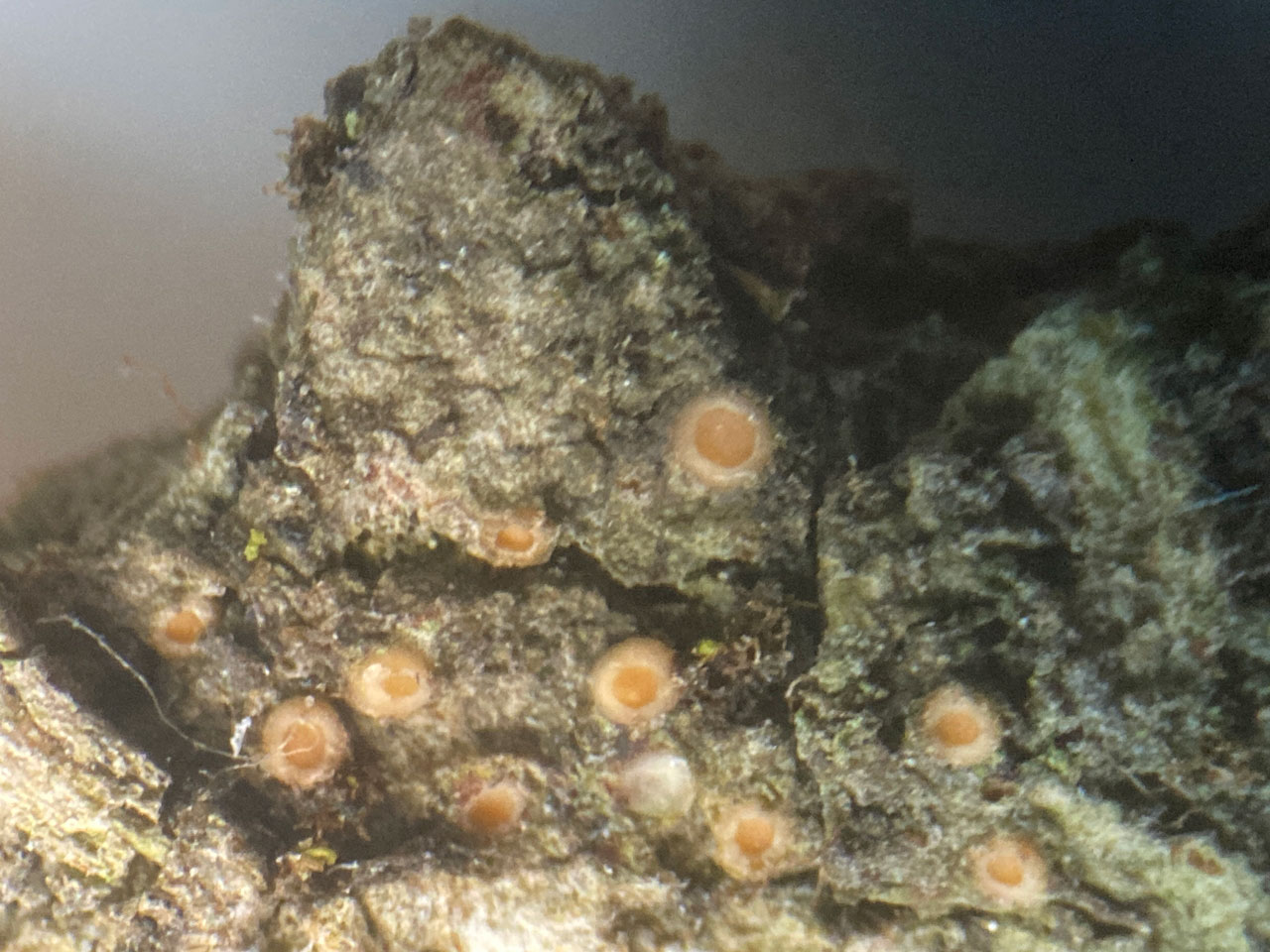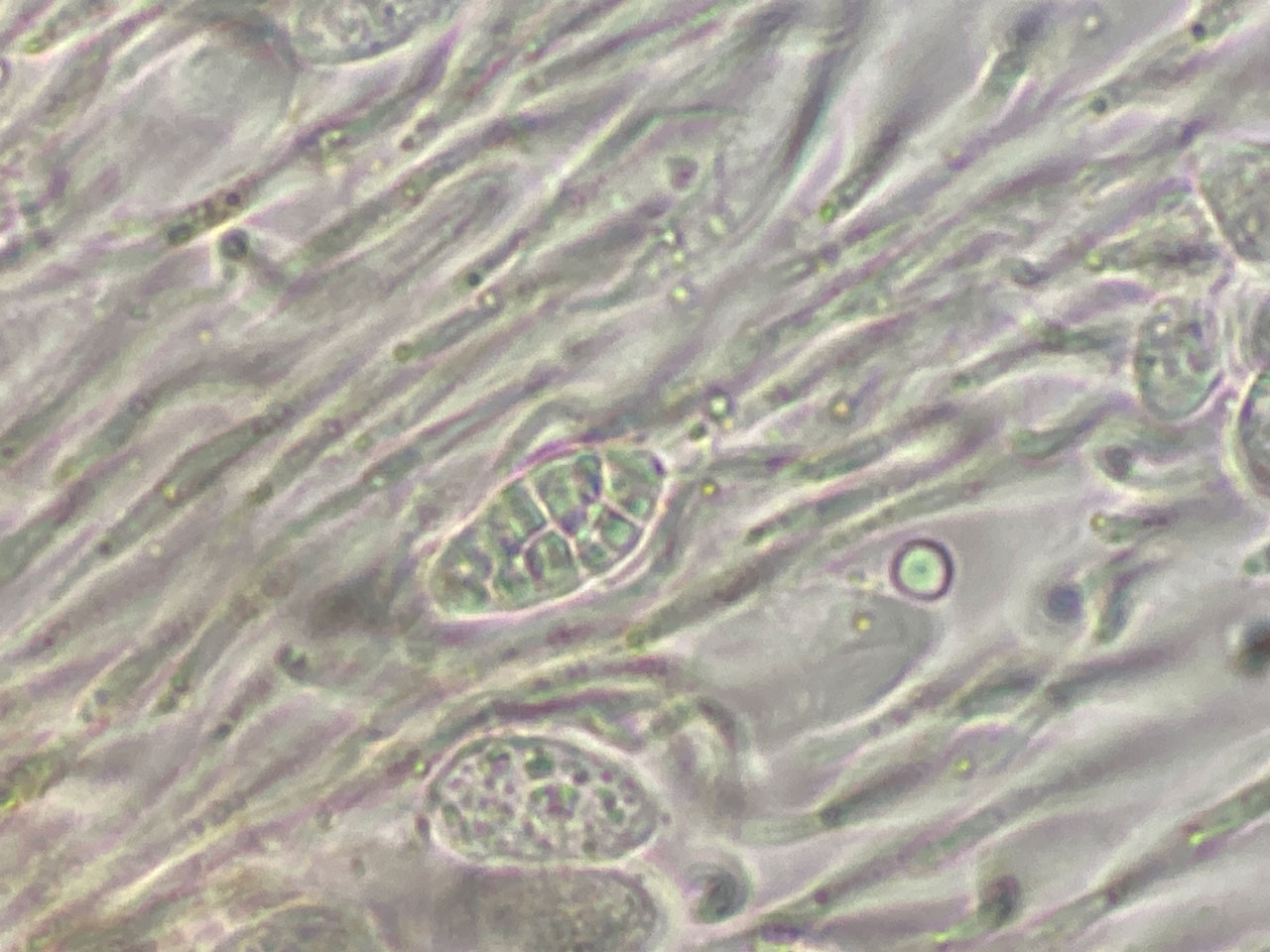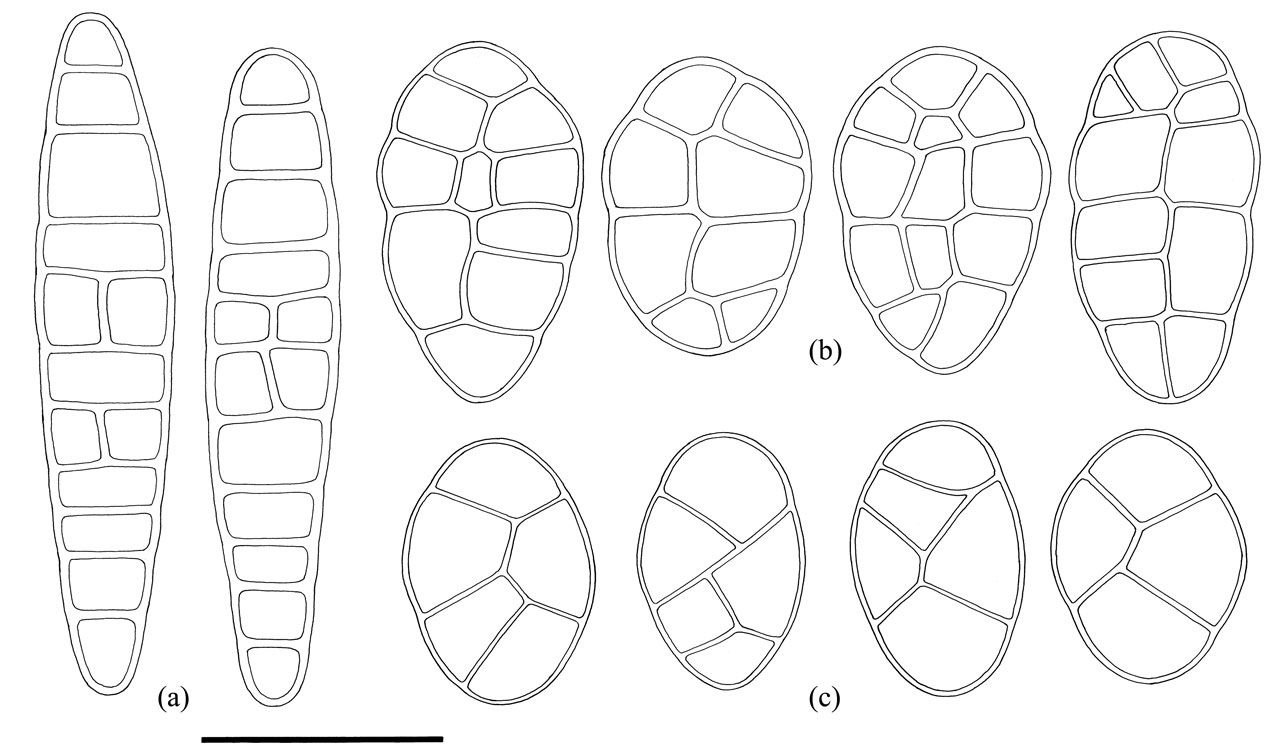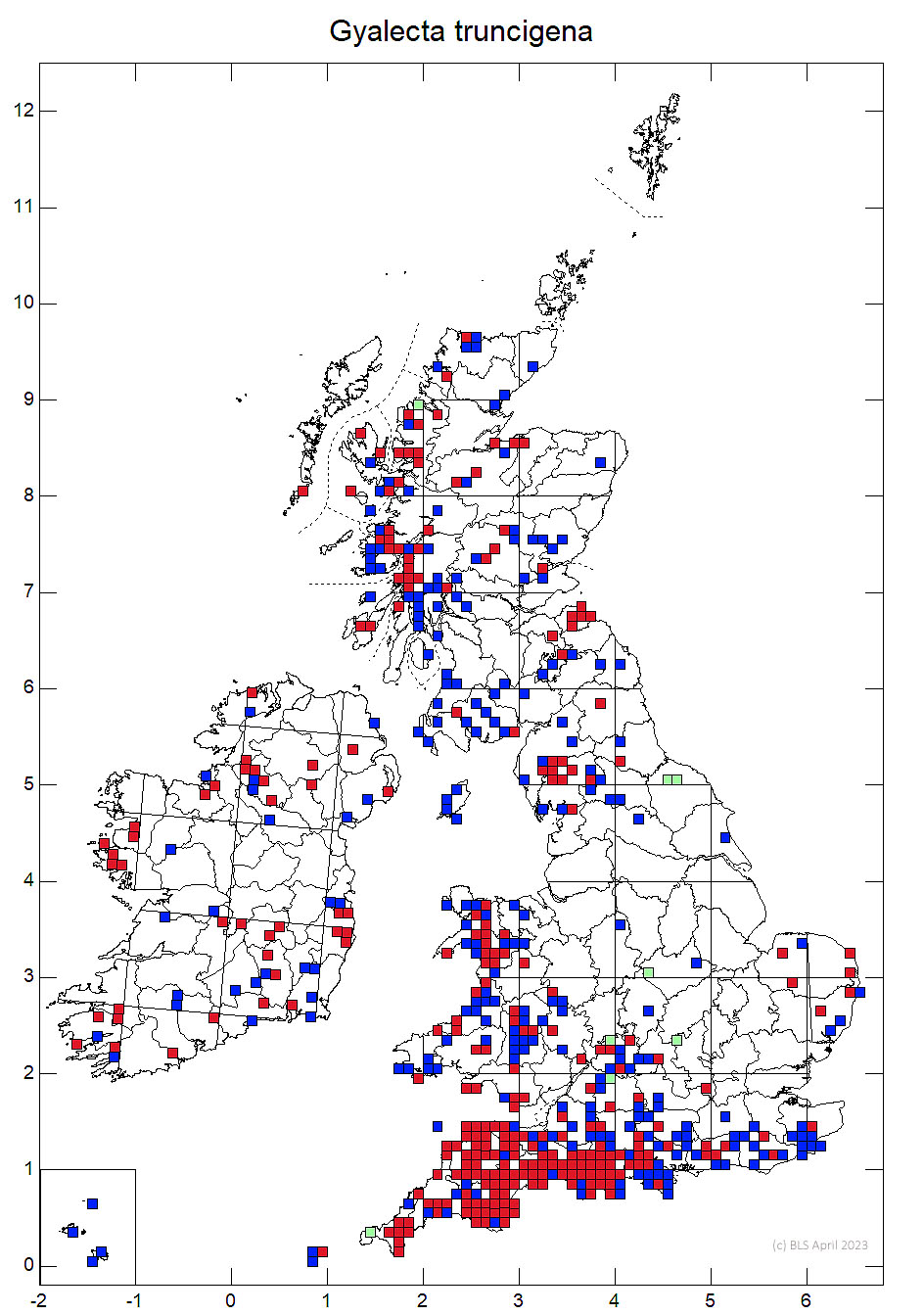Gyalecta truncigena
This lichen can be spotted as deeply concave, pale to deep orange or brownish apothecia, with a paler raised margin on a greenish or grey thallus, typically on flushed higher pH bark and most frequent to the south west. The most frequent epiphytic Gyalecta but only definitively separated from Gyalecta flotowii and Gyalecta derivata by the spore shape.
Thallus inconspicuous, thin to scurfy, glaucous, greenish or grey. Apothecia 0.2–0.5 mm diam., immersed, rarely superficial, scattered to confluent, pale orange, flesh-coloured or pale brown; true exciple thick, smooth, even, rarely uneven-wavy, cream to brownish or yellowish pink; disc to 0.25 mm diam., deeply concave, pale to deep orange or brownish. Ascospores 14–28 (–31) × 5–9 µm, cylindric-fusiform, sparingly muriform, with 6 or more cells in optical view; septa oblique, rarely regularly transverse.
For separation from Gyalecta flotowii and Gyalecta derivata see those species.
On nutrient-rich bark of trees, especially Ash and Maple, often in well-lit situations; very rarely on old mortar of walls, limestone boulders and gravestones; common overall.
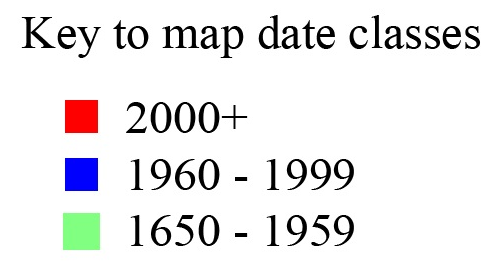
Throughout most of Britain and Ireland, but rare in formerly sulphur dioxide polluted areas and north east Scotland.
Cannon, P., Coppins, B., Aptroot, A., Sanderson, A. & Simkin, J. (2024). Ostropales genera I, including Absconditella, Belonia, Clathroporinopsis, Corticifraga, Cryptodiscus, Cryptolechia, Francisrosea, Gomphillus, Gyalecta, Gyalidea, Gyalideopsis, Jamesiella, Karstenia, Nanostictis, Neopetractis, Pachyphiale, Petractis, Phialopsis, Phlyctis, Ramonia, Sagiolechia, Secoliga, Sphaeropezia, Spirographa, Stictis, Thelopsis, Thrombium and Xerotrema. Revisions of British and Irish Lichens 38: 1–60.
Text by Neil A Sanderson based on Cannon et al (2024)
